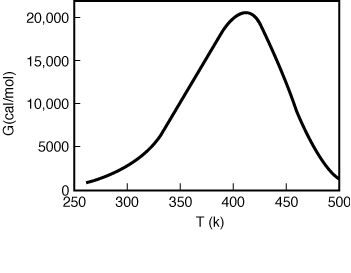Chapter 12: Steady-State Nonisothermal Reactor Design: Flow Reactors with Heat Exchange
Additional Homework Problems
CDP12-JB
| The reversible second-order liquid-phase reaction | ||
|
|
||
| is carried out adiabatically in a CSTR. Species A is soluble in a
number of different inert solvents, each with a different heat capacity that can
be used as a feed stream. Because the solvents are miscible, the heat capacity of
the feed stream can be varied continuously by mixing different solvents. The molar
feed ratio of inert solvent to reactant A is 4:1. We will use a mixture of two solvents,
P and Q. Solvents P and Q may be mixed in any ratio to give the desired heat capacity.
The heat capacity of solvent P is 20 cal /g mol |
||
| Additional information: | ||
|
|
||
| (a) What is the conversion if only solvent P is used? (b) What is the conversion if only solvent Q is used? (c) What should be the ratio of solvent P to solvent Q to obtain the maximum conversion? Assume a linear mixing rule to determine the heat capacity of the solvent mixture. What is the maximum conversion? (d) At the maximum conversion in part (c), are there other steady states, and if so, what are the corresponding conversion and reactor temperature? (See Table CDP12-J and Figure CDP12-J.) (Note: The volumetric flow rate as well as the molar flow rate of A remains unchanged as the solvent ratio is varied.) |
||
|
|
